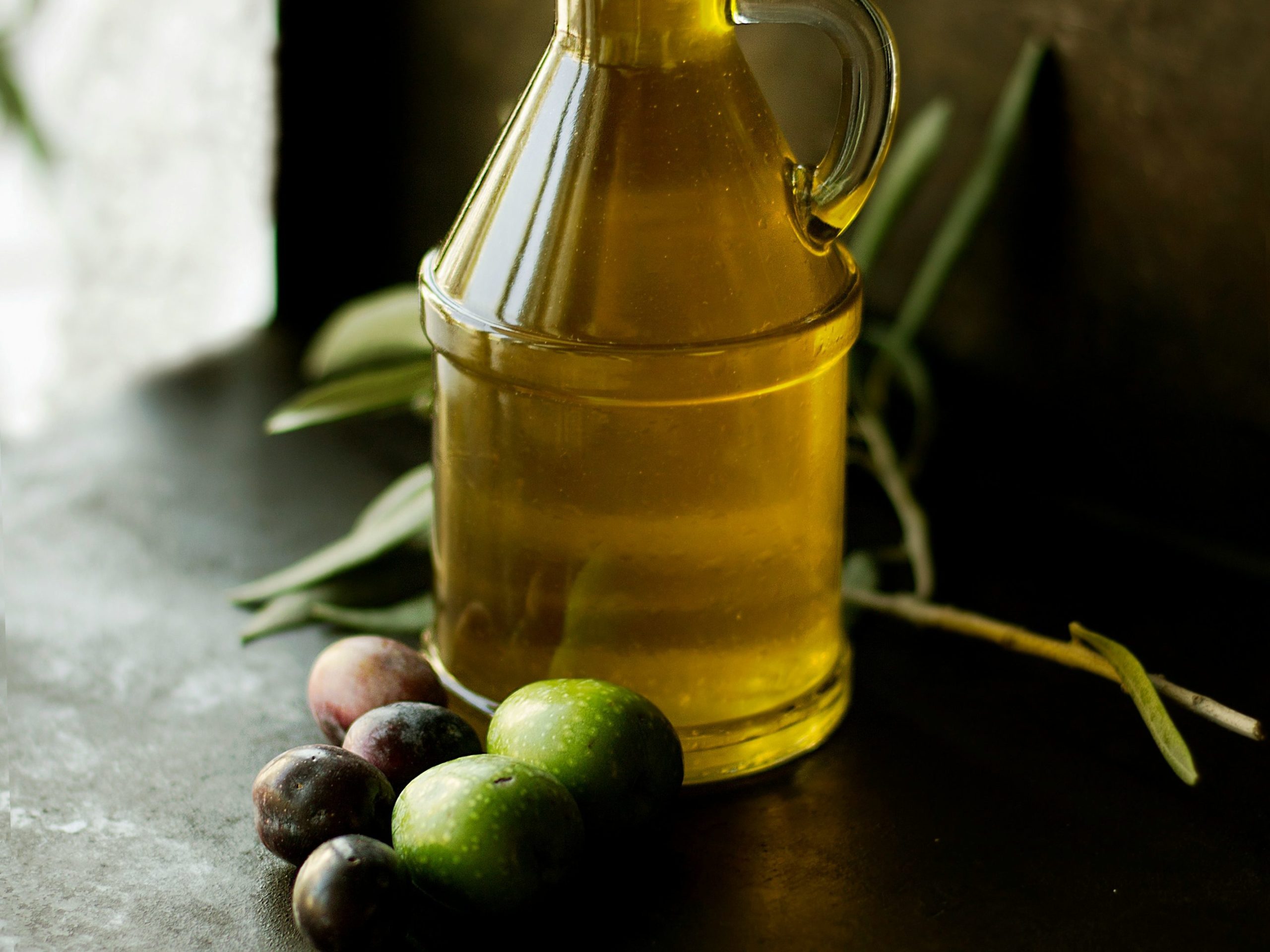Everything You Need to Know About Olive Oil – Benefits, Risks, and More!
Olive oil is a very common kitchen staple, used in various recipes from salads to sauces and more. How healthy is this common oil, and should it be used as generously as it is?

Keep reading to find out everything you need to know about Olive oil, including benefits, risks, and how to use it in different recipes. Plus, check out a list of alternatives to it if you decide it’s just not for you.
What is Olive Oil
Olive oil is a fat that comes from pressing whole olives. These are trees that usually come from the Mediterranean basin. It is commonly used for frying or as a salad dressing. It can also be found in various other products such as skincare, cosmetics, soaps, fuel, and pharmaceuticals.
Composition
It’s important to note that not all olive oil is created equally. The composition of it depends on many factors, including how it’s extracted, altitude, or even the time it is harvested. Olive oil primarily consists of oleic acid, which can constitute over 80% of the ingredients. It is also made up of other fatty acids including linoleic acid and palmitic acid.
Free acidity classifies the quality of this product. Increases in acidity are due to the fatty acid released from triglycerides in olive oil during the process of extraction. When an olive oil is classified as extra virgin, this means it has 0.8% of free acidity. Any olive oils that are labeled virgin, have an acidity of 0.8% and 2%. Lampante olive oil is not edible and has an acidity of over 2%. It is used in fuels and lamps.
Benefits
Olive oil has proven benefits that can make it very beneficial in your diet. It is considered a healthy monounsaturated fat. About 14% of this product is saturated fat, 11% is polyunsaturated fat, and the rest, over 73%, is monounsaturated fat. Monounsaturated fat has been found to reduce inflammation and may even have a beneficial effect in decreasing our risk for cancers. It tends to lower cholesterol and reduce blood pressure as well.
This oil is also very nutritious. It contains many antioxidants, which can help reduce your risk of disease, fight inflammation, and lower your risk of heart disease. The soil also contains high amounts of vitamins E and K.
The consumption of oil is also not associated with any weight gain. In a study of blue zones, diets high in olive oil had beneficial effects on body weight. The increase in antioxidants in the blood can also be a reason for weight management due to this ingredient.
Potential Risks
As olive oil is very calorie-dense, there is a risk of overeating it, particularly when it is used as the main ingredient in sauces.
Furthermore, some oils are not good for cooking. Some fats, oils, and other products can become damaged when exposed to high heat. This is the case for oils such as soybean and canola oil. This is due to the high amounts of polyunsaturated fats in them. In fact, overheating these types of oils can create harmful compounds which have been linked to cancers.
While this oil does contain some types of fat that can be damaged due to heat, the high amount of monounsaturated fat makes it a bit more stable. It is resistant to oxidation but has a moderate smoking point. However, the smoking point is between 374–405°F (190–207°C), depending on the quality of the oil. This means that it cannot be used for high-temperature baking.
In theory, using olive oil to fry should be fine. This study found that heated olive oil did increase oxidative markers compared to food with unheated oil olive. However, the study cooked the oil for 8 hours, which is not comparable to a 30-minute meal cooking time.
Alternatives
As I like to say when in doubt, do without. Some good alternatives to olive oil include avocado and coconut. These have a high smoke point, making them safer to use at high temperatures.
However, it is important to know that olive oil is safe to use at low temperatures, such as roasting garlic at 230 degrees Fahrenheit or pan frying at a low temperature. Remember when you use it for cooking, to avoid bubbling or steaming of the oil.
How to Use Olive Oil
Olive oil can be used in a variety of ways. As stated above, you could use it for low-temperature pan frying or baking at a low temperature. It can be used in salad dressings and a variety of sauces. This ingredient has a strong nutty flavor, so it should be used in recipes where you want to highlight its taste.
Some individuals are a fan of baking with olive oil. Again, use it in recipes where the baking temperature is lower than 370° Fahrenheit. Plus, it has a strong, nutty flavor, so remember that you will taste it in whatever recipe you use it in.
The Takeaway
Olive oil is incredibly healthy especially when it’s up to the extra virgin variety. It has a lot of benefits, as it is full of antioxidants and anti-inflammatory properties. It also has heart health benefits and can help you manage your weight. Other benefits include protection against cancer, reducing oxidative stress, supporting healthy blood pressure, and lowering cholesterol. While it can be used for cooking, it should not be used at very high temperatures due to its smoking point.
A good alternative for cooking at extremely high temperatures can be avocado oil, which has a smoking point of 750 degrees Fahrenheit. However, there are many benefits to adding olive oil to your daily meals, so make sure you try it out in soups, salads, sauces, or other recipes!
Remember that health comes from within. Eat nutrient-dense meals, exercise when you can, at least 3 times a week, and take care of your mental health. Daily habits become the building blocks for emotional, mental, and physical health. Take care of your gut health too! Learn everything you need to know about gut microbiota today for free here.





